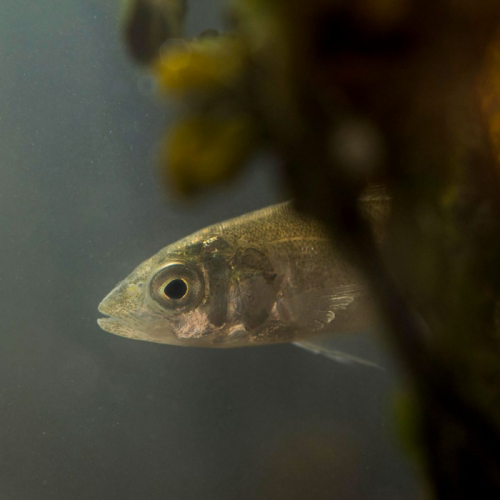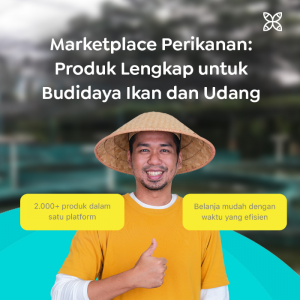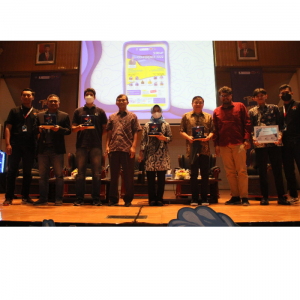
The Plan to Rear Fish on the Moon
| Mon, 22 Feb 2021 - 16:19
The seabass eggs, all 200 of them, were settled in their module and ready to go. The ground crew had counted the eggs carefully, checked each for an embryo, and sealed them tightly within a curved dish filled precisely to the brim with seawater.
The countdown, and then—ignition! For two full minutes, the precious eggs suffered a riotous shaking as the rocket’s engines exploded to life, followed by another eight minutes of heightened juddering as they ascended to the heavens. These embryonic fish were on their way to low Earth orbit. Next stop: the moon.
Well, they haven’t actually left yet. But after a recent simulation designed to re-create the intense shaking of a typical takeoff, researchers in France found that the eggs survived the ordeal well. It’s a crucial discovery in the progress of the Lunar Hatch, a program that aims to determine whether astronauts could successfully rear fish on a future moon base.
Ultimately, Cyrille Przybyla, an aquaculture researcher at the French Research Institute for Exploitation of the Sea who led the research, dreams of designing a lunar fish farm that uses water already on the moon to help feed residents of the future Moon Village set to be established by the European Space Agency (ESA). The Lunar Hatch project is just one of around 300 ideas currently under evaluation by the ESA, and may or may not be selected for the final mission. Przybyla’s hope, though, is to offer lunar residents fresh, appetizing, protein-rich food—not just packets of freeze-dried grub.
“I proposed the idea to send eggs, not fish, because eggs and embryos are very strong,” says Przybyla.
His experiments so far suggest that he is right. However, his team’s research has also suggested that not all fish are equally spaceworthy.
To begin their search for the perfect astro-fish to serve on the moon, Przybyla and his colleagues whittled down a list of hundreds of species to just a handful—those with modest oxygen requirements, low carbon dioxide output, a short hatching time, and a resistance to charged particles, since life forms are exposed to radiation during space travel. They then decided to probe the integrity of eggs produced by two species—European seabass and meagre.
Beakers containing the eggs were initially jiggled using a standard piece of lab equipment called an orbital shaker. They passed this first test. Then, they were exposed to much stronger vibrations using a different machine that shook them in a special sequence designed to simulate the launch of a Russian Soyuz rocket. The team argues that no spaceflight would ever induce juddering more extreme than that.
After shaking, 76 percent of the seabass eggs went on to hatch, a result that wasn’t far off the 82 percent success rate of unshaken control samples. Compared to seabass, meagre eggs did even better: 95 percent of the shaken eggs hatched as opposed to 92 percent of those in the control group.
“It was completely crazy,” says Przybyla in delight. “The environment was very hard for these eggs.”
Przybyla suspects that, having evolved to withstand the adversities of aquatic environments—where they might endure strong currents, waves, and collisions with hard surfaces—the fish eggs are naturally space-ready.
Besides the nutritional boon of moon-farmed fish fillets, Przybyla suggests there will be other benefits for astronauts who may one day find themselves rearing animals in space.
“From the psychological point of view, it’s better to have a reminder of Earth—you have a garden, you have a tank with fish,” he says.
Luke Roberson, a researcher at NASA’s Kennedy Space Center in Florida, agrees. Astronauts living on the International Space Station regularly spend time tending to and visiting the plants they grow on board, he says.
“Add to that a pet fish or pet invertebrate—it adds another level of psychological benefit. That makes it feel more human,” says Roberson.
Designing self-contained and self-supporting systems for food production beyond Earth will be crucial for future space exploration programs, he adds. And he says Przybyla’s study is “a great first step” toward showing that aquaculture is a viable part of that future.
Roberson also points out that seabass is an interesting choice because the species is tolerant to varying levels of salinity. That might make it easier to accommodate them despite the moon’s limited water. And, he adds, the seabass could potentially be supplied with wastewater from other moon base systems that use water from the lunar environment to produce hydrogen-based rocket fuel.
However, there could be an even more appropriate choice of lunar seafood out there. Roberson and colleagues recently considered the pros and cons of various species as candidates for off-world aquaculture. Invertebrates, such as mussels and shrimp, it turns out, might be an even better bet than seabass: “Vertebrate species take up a lot of space—and they don’t provide the caloric intake per mass,” says Roberson.
Source: Hakai Magazine






















